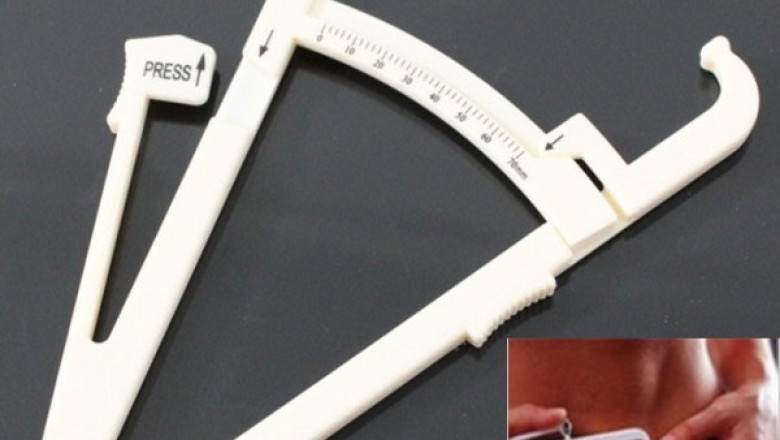views
Methods of Measuring Body Fat
There are several common methods used for measuring body fat percentage. Each method has its strengths and weaknesses. Understanding the different options can help you choose the most appropriate method.
Body Mass Index (BMI) - Body Fat Measurement Market is a simple calculation based on your height and weight. It can provide a general indication of body fat levels but is not very accurate, as it does not distinguish between fat mass and lean mass. BMI tends to underestimate body fat in muscular individuals and overestimate in elderly or frail individuals.
Skin Fold Calipers - Skin fold calipers are used to directly measure the thickness of skin folds in various areas of the body like the triceps, biceps, suprailiac, and thighs. These measurements are then plugged into a formula to estimate body fat percentage. When done correctly by a trained professional, skin fold measurements can provide reasonably accurate results. However, results can vary significantly between different technicians.
Bioelectrical Impedance Analysis (BIA) - A BIA device runs a very weak electrical current through the body and uses the resistance to currents to distinguish between fat and fat-free mass. It is convenient as no disrobing is needed but can be affected by factors like hydration levels, food/drink intake, and workout status. Accuracy is best with a portable professional device rather than a consumer scale.
Underwater Weighing - This method involves being submerged completely in water while exhaling all air from the lungs and weighing oneself. It compares body weight in and out of water to calculate body density and then uses formulas to estimate body composition. It is very accurate but not practical or accessible for most people.
Dual-energy X-ray Absorptiometry (DXA) - A DXA scan uses two low-dose X-ray beams to distinguish bone mass, fat mass, and lean mass. It provides highly accurate results but the equipment is not widely available and tests can be costly. DXA is typically only used in clinical settings.
Air Displacement Plethysmography (Bod Pod) - The Bod Pod uses whole body air displacement rather than water to measure body volume. It yields results similar in accuracy to underwater weighing or DXA. While more accessible than those methods, high costs still limit widespread consumer use of Bod Pods.
Determining Your Body Type
In addition to knowing your overall body fat percentage, it can also be informative to understand your general body type classification:
Ectomorph - Naturally thin build with difficulty gaining weight. Bone structure tends to be rectangular/linear. Metabolism tends to be naturally faster.
Mesomorph - Athletic/muscular build. Bone structure is wide with broad shoulders. Muscle development tends to come more easily with exercise.
Endomorph - Tendency toward accumulating more body fat. Bone structure is often circular/rounded rather than linear or wide. Weight gain occurs more readily, especially around the midsection.
Of course, most people fall somewhere in between the three categories rather than being a pure body type. Understanding your natural tendencies can help optimize diet and training approaches to achieve desired body composition goals. Identifying as mainly endomorphic, for instance, could involve more attention to metabolic optimization and targeting abdominal fat loss.
Setting Realistic Body Fat Goals
The "healthy" range for body fat percentage varies considerably based on gender and age. It's important to set goals that align with what is realistic and healthy rather than unrealistic societal/media ideals:
- Men: 14-17% is considered fit. Below 6% is unsustainable for all but a few hours. 8-25% is the general healthy range.
- Women: 21-24% is considered fit. Below 15% is unsustainable long-term. 25-31% is the general healthy range.
- As you age, the range shifts up slightly with normal metabolic changes and loss of muscle mass. More important than a specific number is maintaining a body composition that supports health and functionality.
Unrealistic expectations set yourself up for frustration and potential disordered behaviors. Be patient through the process and focus more on non-scale victories like strength gains, increased energy levels, and improved cardiovascular fitness. Changes in body fat percentage happen gradually over weeks and months.
Prioritizing a Balanced Lifestyle
Besides developing consistency with important measurements and tracking progress, maintaining overall well-being should be the priority. Focusing too narrowly on body fat numbers risks losing perspective on lifestyle sustainability:
- Build muscle through strength training to boost metabolism and aid fat loss. Don't rely solely on cardiovascular and calorie restriction approaches.
- Nourish your body with unprocessed, whole foods as much as possible within your calorie needs. Fad diets don't support long-term health.
- Manage stress through relaxation techniques. High stress contributes to metabolic dysregulation and fat storage over time.
- Get quality sleep nightly. Lack of sleep interferes with appetite hormones and fat burning processes.
- Move your body joyfully with exercise and activities you genuinely enjoy. Well-being depends more on lifestyle habits than temporary dietary changes.
With balanced perspective and realistic expectations, measuring and understanding your body composition empowers you to reach and maintain a healthy relationship with your body over the long run. Maintain balanced priorities, appreciate non-scale progress, and focus on feeling energized rather than any single number.
About Author:
Money Singh is a seasoned content writer with over four years of experience in the market research sector. Her expertise spans various industries, including food and beverages, biotechnology, chemical and materials, defense and aerospace, consumer goods, etc. (https://www.linkedin.com/in/money-singh-590844163)






















Comments
0 comment